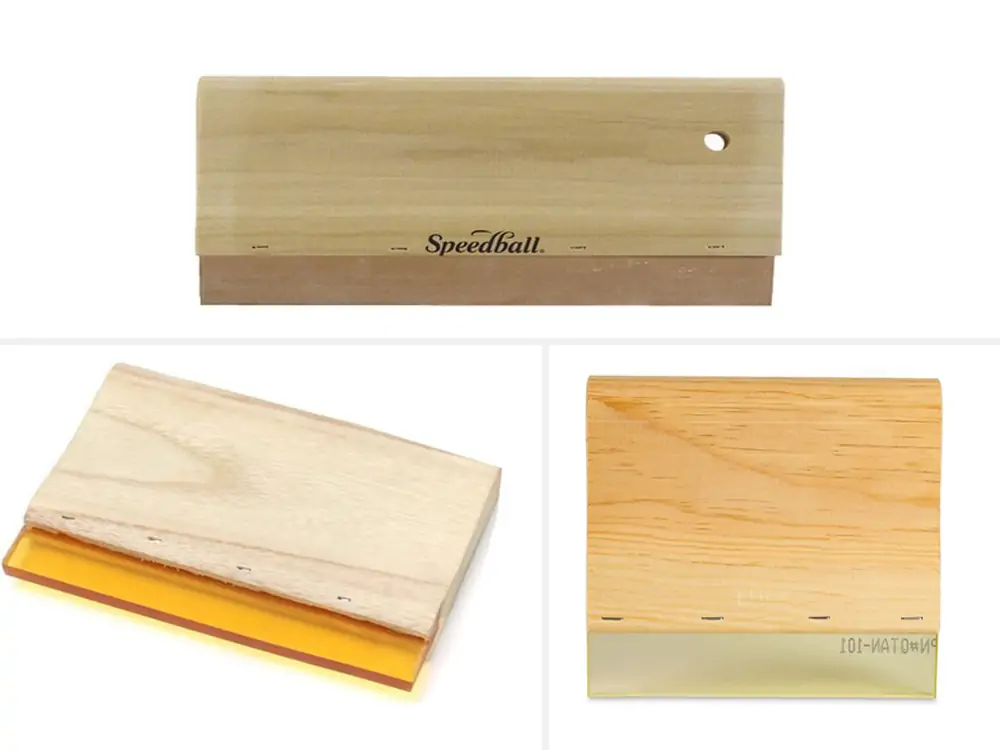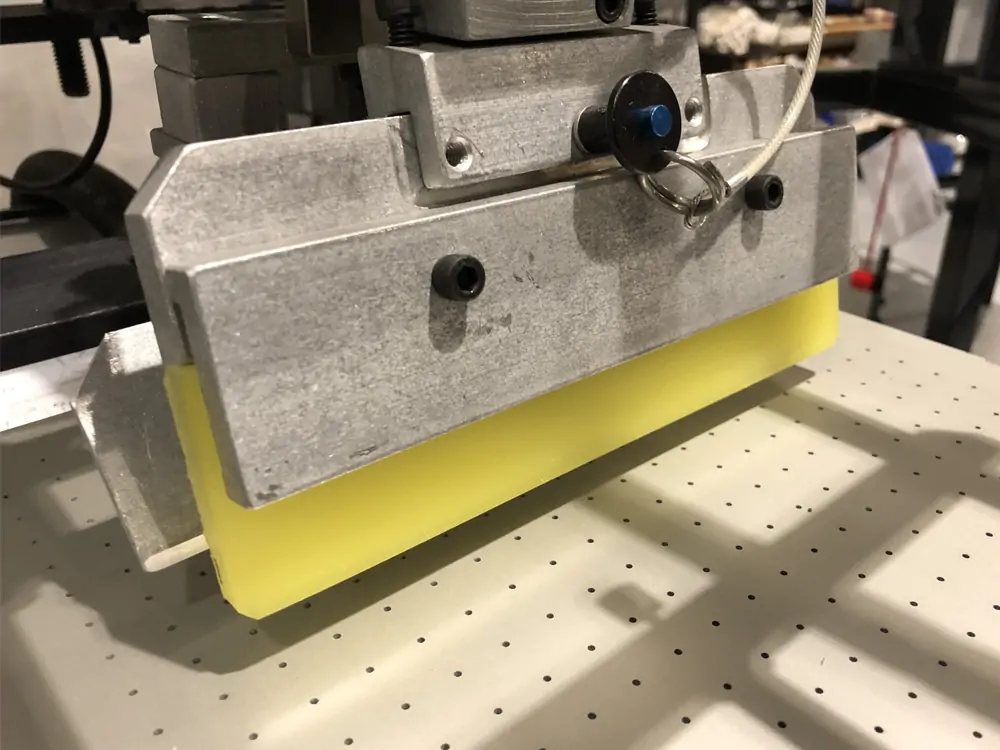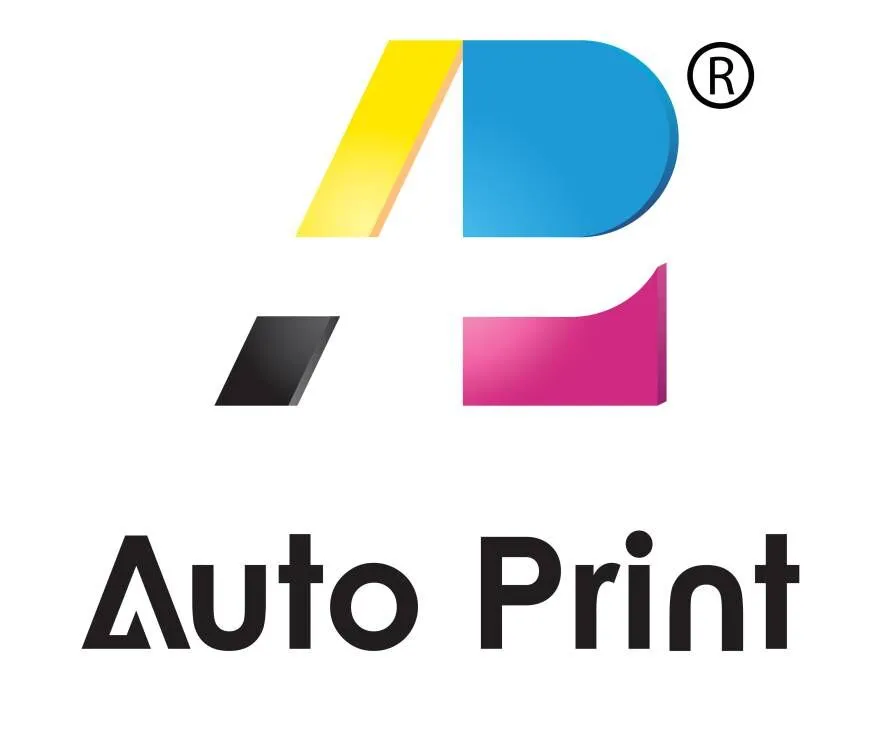Squeegees are major players in the field of screen printing. These thin blades of rubber or polyurethane push ink through the screen and onto the material or substrate. The result of this is a direct impact on the consistency and quality of the print. In automatic flat-screen printing machines, it is necessary to choose the perfect squeegee. This will guarantee that your screen printer remains in good form and continues to work for a long time.
Aside from a long shelf-life, the right squeegee makes all the difference in a screen-printer. It is a sure-kill way to differentiate subpar results from professional-grade prints.
This article will guide you through the key factors to consider when choosing your squeegees. This detailed guide will help you optimize your automatic flat-screen printing process for the best results.
Squeegee Material Selection
The material of your squeegee blade affects how well it performs. In this section, we’ll discuss three main types of squeegees.

a. Rubber:
Natural rubber squeegees are soft and flexible. These tender qualities make them suitable for jobs that need a gentle touch. Rubber squeegees work well for textile printing, however, they wear out quickly and fall apart under harsh chemicals.
b. Neoprene:
Neoprene is a synthetic rubber that offers better resistance to chemicals and other harsh conditions. It is known for its balance of properties that make it suitable for various applications.
Neoprene is stronger than natural rubber and offers better chemical resistance during print. It is also an excellent middle-ground for printers that require durability and flexibility.
c. Polyurethane:
This is the most popular choice among squeegee materials. It is versatile, durable, and resistant to chemicals. It also maintains its hardness better than rubber and has an excellent shape memory. The use of polyurethane ranges from fine detail work to speed printing and long-run jobs.

Squeegee Durometer and its Impact
A durometer measures how hard a squeegee is on a scale of 0 to 100. On a durometer, the higher the number, the harder the squeegee blade. The hardness or softness of a squeegee affects how it performs.
a. 60 Durometer for Flexibility (Soft)
Squeegee durometers within this range are known for their softness and flexibility. They conform well to uneven surfaces and can lay down thick ink deposits. This makes them suitable for jobs that require large ink volumes, like printing on textiles and fabrics.
b. 70 Durometer for Versatility (Medium)
Durometer squeegee blades within this range are the most versatile. They work well for many jobs and offer a good balance between ink deposit and detail. In addition, they are durable enough for most automatic printing setups, hence, why they are the go-to option for many textile printers.
c. 80 Durometer and above for Stiffness (Hard)
Durometers within this range are used in unique jobs that need fine details. They are also great for high-speed printing since they offer terrific resolution. However, they are of limited use because they are too stiff for many widespread printing tasks.
Squeegee Angle Setting
The angle of your squeegee is an important factor that affects print quality, ink deposit, and squeegee wear. It is measured from the print bed at 0° to 90°. Most automatic machines let you adjust this angle, but here’s what you need to know about the process:
a. Steep Angle (more upright, closer to 90 degrees)
At this angle, the squeegee deposits less ink, making it adequate for halftones and fine details. The steep angle puts less wear on your squeegee but it might not cover well on textured surfaces.
b. Shallow Angle (more laidback, closer to 45 degrees)
This angle lays down more ink and works better for full coverage and rough surfaces. It is best suited for high-viscosity inks. But this angle can also increase the wear of your squeegee.

c. Medium Angle( 75 degrees)
At 75°, there is a balanced ink deposit which is great for general-purpose printing. This angle applies to most ink types and offers the most even coverage.
For most jobs, you should start with your squeegee at 75°, after which you can adjust the angle based on your results. If you’re not getting enough coverage try going shallow. If you’re losing detail, go steeper.
Factors to Consider Before Setting the Squeegee Angle
I.Ink characteristics
- Use thinner inks for steeper angles.
- Use thicker inks for shallower angles.
II.Substrate Texture
- Smooth surfaces allow for steeper angles.
- Rough or textured surfaces/substrates need shallow angles for better coverage.
III.Detail Level
- Steep angles work best with fine details and halftones
- Shallow angles give the best coverage to solid and textured materials
IV.Print speed
- Higher speeds require steep angles to prevent ink buildup
- Slower speeds can accommodate shallower angles.
V.Mesh Count
- A higher mesh count does well with steep angles
- A lower mesh count will need shallow angles to push ink through.

Squeegee Care and Maintenance
I.Clean After Every Use:
Avoid letting the ink dry on the squeegees. Always clean them right after printing. Use the correct solvent for your ink type to scrub the ink from the blade.
II.Rotate regularly:
If your squeegee holder allows it, rotate the blade regularly. This will help even wear and tear and extend the life of your squeegee.
III.Store properly:
Keep the squeegee lying flat or hanging straight down. Don’t let them rest on their edges because it can cause warping or nicks. The ideal environment to store squeegees is devoid of heat and direct sunlight.
IV.Avoid harsh chemicals:
Some solvents can damage your squeegee. Therefore, you should always use the cleaners specified for your blade type. You can get information about suitable solvents from your manufacturer’s guidebook.
V.Inspect them often:
Check your squeegees before each run for rounded edges, nicks, or uneven wear. This is so you can address any issues before they affect your prints.
VI.Resurface when necessary:
Resurfacing is an effective way to extend your squeegee’s life. This process involves carefully sanding the squeegee’s edge to restore a sharp, even surface. There are specific tools for this job, but you can cause more harm than good if you’re inexperienced.
VII.Keep them cool:
Heat softens and damages squeegees. If your print area gets too hot, give your squeegees periodic breaks to cool down.
Squeegee Performance in Printing on Different Materials
Different substrates need different printing approaches. That’s why this section will explore how squeegees perform on popular materials.
1.Paper and cardboard
Medium to hard durometers work better on these materials. They provide good detail without leaving excessive ink deposits. But for softer papers, you’ll need a soft durometer to ensure complete coverage.
2.Textiles
Soft to medium squeegees are ideal for most fabrics. They conform to the texture of the material and ensure good ink penetration.
3.Glass
For glass materials, medium to hard squeegees work best. They provide the expected detail while laying down enough ink for opacity.
4.Metal
Hard squeegees print best on metals because they can handle their abrasive surface and maintain detail. Moreover, the inks suitable for metal printing need the pressure only a hard squeegee can provide.
5.Wood
The best squeegee choice depends on the wood’s finish. For smooth woods, medium to hard squeegees work best. But, for rough or unfinished lumber, you’ll need softer squeegees to ensure good coverage.
Squeegee Replacement Frequency and Cost Analysis
The replacement frequency of your squeegee depends on several factors. Among these include;
- Print volume
- Type of material
- Ink abrasiveness
- Maintenance practices
- Squeegee material and durometer
With good care, a quality polyurethane squeegee should last for five cycles or 50,000 to 100,000 impressions. Rubber and neoprene squeegees usually have shorter lifespans but are less expensive.
Factors to Consider for Cost Analysis
a.Initial Cost
Nothing good comes cheap, and the same goes for quality squeegees. Polyurethane blades might cost somewhere between $20 to $40 per foot. Rubber squeegees are, however, less expensive as they often cost $25 and below upfront. But remember that cheaper isn’t always better in the long run. Therefore, choose quality squeegees that suit your specific needs and applications.
b.Lifespan
A more expensive squeegee typically lasts longer than cheaper variants under the same conditions. Track how long your squeegees last under different conditions while in use. When you know which product lasts the longest, you make informed decisions.
c. Downtime
Changing squeegees frequently is necessary, but it also takes time. If you replace your squeegee too often, you’ll lose production time. And lost production time equals fewer prints and reduced income. Hence, we suggest spending more on durable squeegees to limit downtime to a minimum.
d.Print Quality
Worn-out squeegee blades are the most common cause of poor prints. It translates to wasted ink and damaged materials. So, consider these potential losses in your cost analysis.
To make things easier, here is a simple way to estimate your squeegee cost per print:
- Note the cost of the squeegee
- Observe how many prints it lasts for
- Divide the cost by the number of prints
For instance, if a $40 squeegee lasts for 80,000 prints, that’ll be $0.0005 per print in squeegee costs. While $0.0005 per print seems small, for high-volume printers, this adds up to quite a sum. For example:
If you have 1 million prints per month:
$0.0005 × 1,000,000 = $500 in squeegee costs
If a higher quality squeegee costs $60 but lasts for 120,000 prints:
$60 ÷ 120,000 = $0.0005 per print
While the print per cost is the same, the better quality squeegee will reduce waste and downtime and save up on overall expenses.
